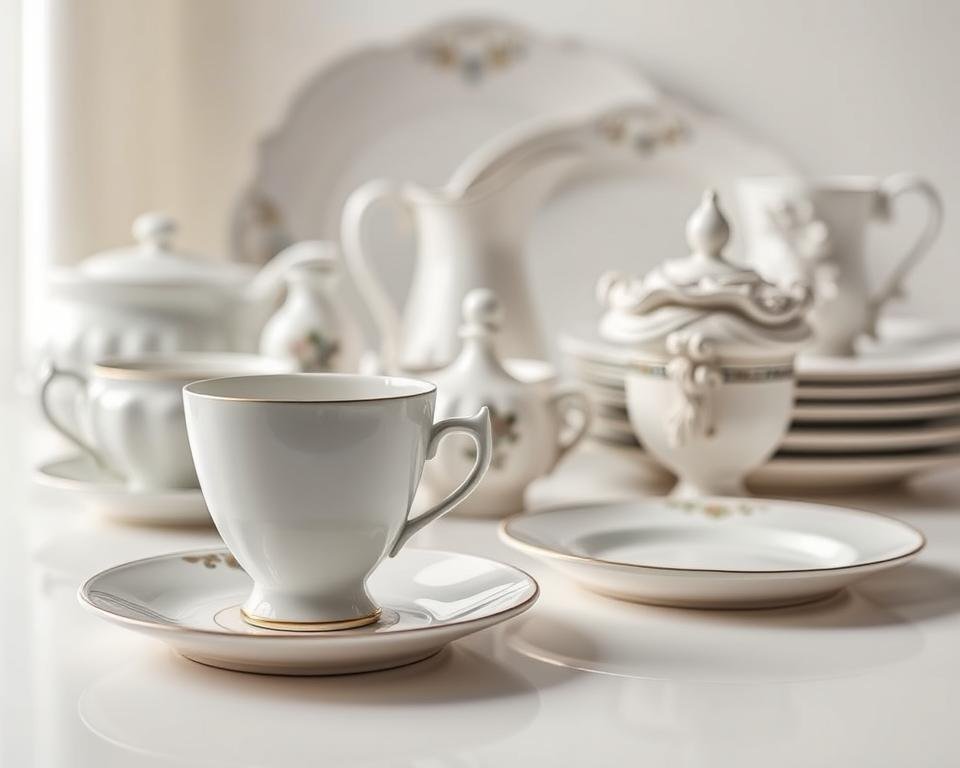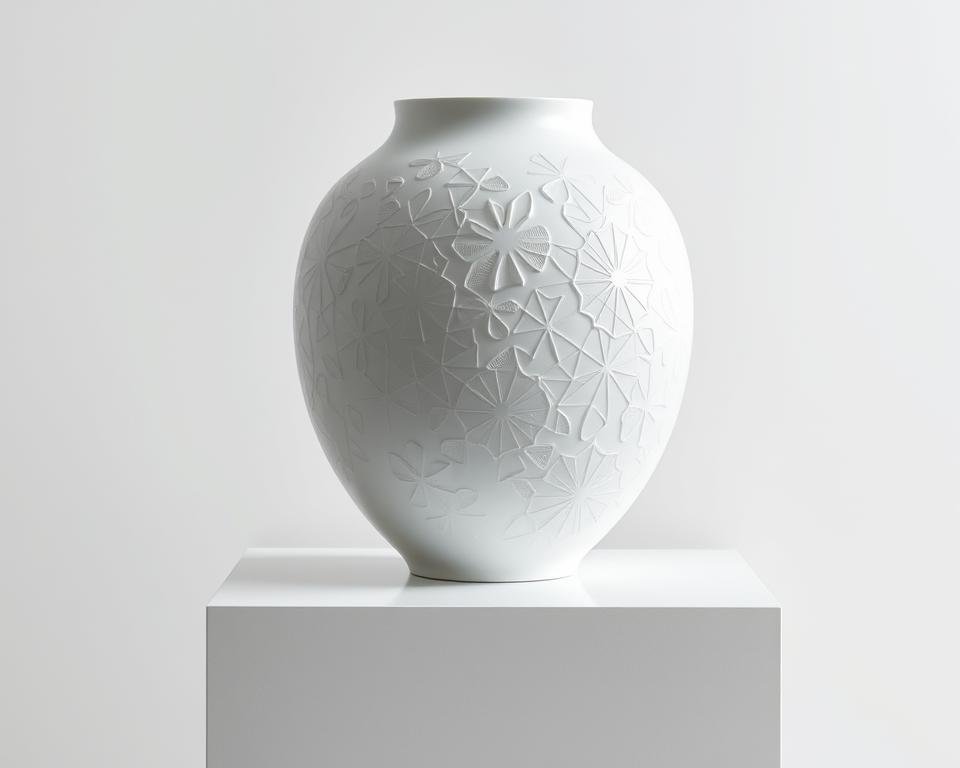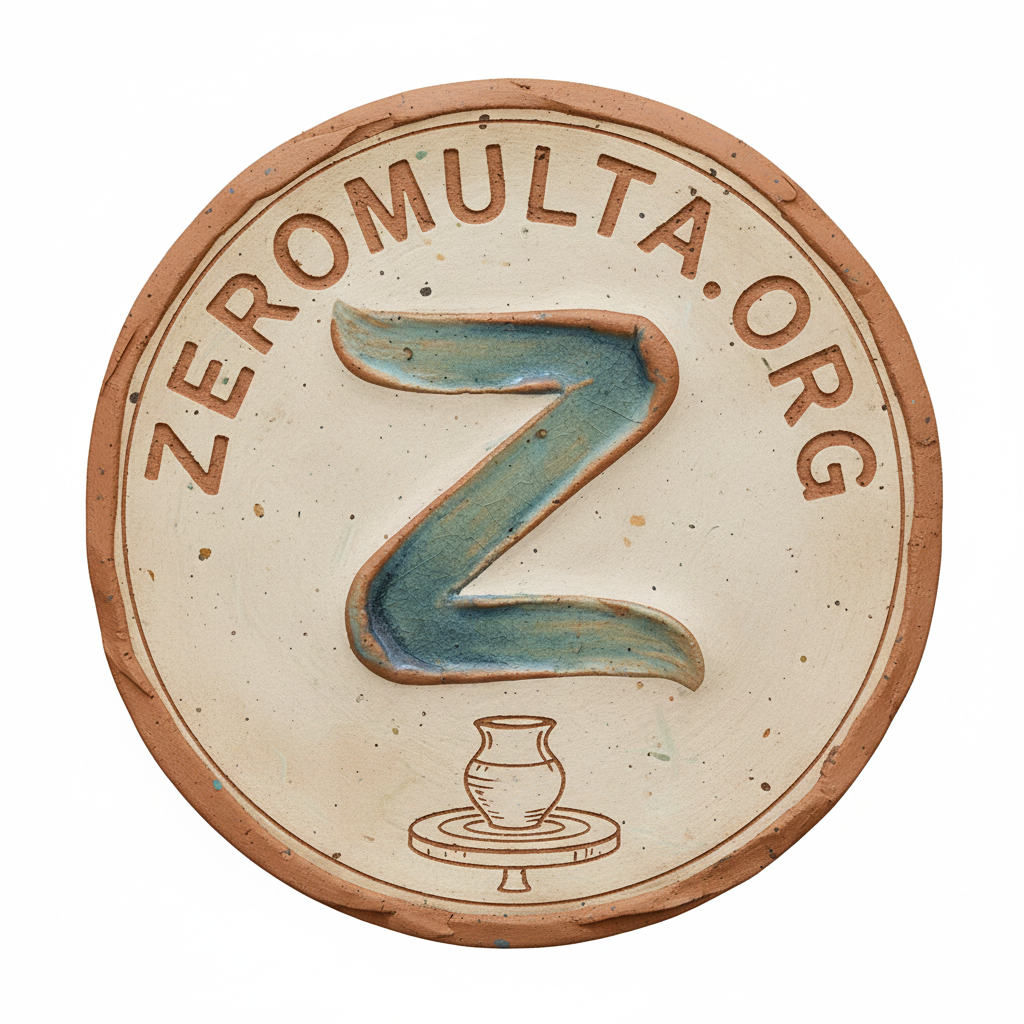Did you know that porcelain has been a cornerstone of artistic expression and functional design for centuries? It’s known for its strength, durability, and beauty. This makes it a favorite for many uses. As I explore porcelain, I’m excited to share key traits that will change how you work with it.
Getting to know the intricacies of porcelain is vital for smart choices in your next project. Whether you’re a designer, artist, or homeowner, knowing porcelain’s traits will open up new possibilities.
Key Takeaways
- Porcelain’s strength and durability make it ideal for various applications.
- The material’s aesthetic appeal is unmatched, opening up a world of design possibilities.
- Understanding porcelain characteristics is key to unlocking its full value.
- Porcelain is a versatile material suitable for DIY projects and professional designs.
- Knowing the material’s properties can help you make informed decisions.
Understanding Porcelain: What Is It Made Of?
To truly appreciate porcelain, we must first know what it’s made of. Porcelain is a type of ceramic material. It’s made from a mix of kaolin, feldspar, and quartz. The exact mix can change based on the product’s use and look.
Common Ingredients in Porcelain
The main parts of porcelain are kaolin, feldspar, and quartz. Kaolin, or china clay, makes porcelain pliable. Feldspar lowers the melting point of the mix and holds it together. Quartz gives porcelain its strength and durability.
Here’s a simple look at what porcelain is made of:
| Material | Role | Proportion |
|---|---|---|
| Kaolin | Plasticity | 40-50% |
| Feldspar | Flux | 20-30% |
| Quartz | Strength | 20-30% |
Types of Porcelain Materials
There are different types of porcelain, each with its own traits. Hard-paste porcelain is strong and clear, perfect for fine china. Soft-paste porcelain is more fragile but beautiful.
The Manufacturing Process
Making porcelain involves several steps. First, raw materials are mixed with water to make a workable paste. Then, the paste is shaped, dried, and fired at high temperatures. This process gives porcelain its strength and beauty.
Knowing how porcelain is made shows its porcelain benefits. Its durability and beauty make it great for many uses, like tableware and decorative items.
Key Properties of Porcelain: An Overview
Porcelain is known for its strength, durability, and resistance to water and heat. It’s perfect for many uses. This makes it a favorite for tableware, decorative items, and industrial parts.
Strength and Durability
Porcelain is famous for its exceptional strength and durability. It’s made from high-quality materials like kaolin, feldspar, and quartz. These are fired at high temperatures, creating a hard, non-porous surface.
This surface is resistant to scratches and chips. So, porcelain products can handle daily use well. They are a practical choice for many.
“Porcelain’s durability is one of its most significant advantages,” say ceramic experts. With proper care, porcelain products can last long. They keep their look and function over time.
Porosity and Water Resistance
Porcelain is also low in porosity and highly water-resistant. The firing process seals most pores. This makes it great for tableware and other items that get wet often.
It’s less likely to stain or harbor bacteria. This makes porcelain a hygienic option.
Thermal Stability
Porcelain also has excellent thermal stability. It can handle extreme temperature changes without breaking. This makes it perfect for cookware, heaters, and more.
Its ability to stay strong under different temperatures shows its versatility and durability.
In summary, porcelain’s key properties make it versatile and desirable. It’s strong, durable, porous, water-resistant, and thermally stable. This makes it great for many uses.
The Aesthetic Appeal of Porcelain
Porcelain stands out for its beauty, with many colors and finishes to choose from. This makes it perfect for both everyday use and as decorative items.
Color and Finish Options
Porcelain can be made in many colors and finishes. Whether you want something classic or modern, porcelain fits your style.
- Matte Finishes: Give a soft, simple look.
- Glossy Finishes: Create a shiny, elegant look.
- Textured Finishes: Add a touchable feel to your pieces.
Design Versatility
Porcelain is great for many designs. It can be shaped into detailed patterns and designs.
Here are some examples:
- Intricate figurines and sculptures.
- Custom-designed tableware and dinner sets.
- Decorative tiles and wall art.
Glaze Types and Their Effects
The glaze on porcelain changes its look. Different glazes can change the color, texture, and beauty of the porcelain.
Here are some glaze types:
- Transparent Glazes: Show off the porcelain’s natural color.
- Opaque Glazes: Give a solid, even color.
- Metallic Glazes: Add a luxurious metallic touch.
Choosing the right glaze lets you customize your porcelain’s look even more.
Applications of Porcelain in Daily Life
Porcelain is everywhere, from our dinner plates to our home decor. It’s strong, beautiful, and versatile. This makes it perfect for many uses in our daily lives.
Porcelain in Tableware
Porcelain is often used in tableware like plates, cups, and saucers. It’s strong and won’t scratch or chip easily. This makes it great for everyday use. Plus, it can be made into fancy designs, making any meal feel special.
Porcelain in Home Decor
Porcelain is also big in home decor. Items like vases, figurines, and ornaments can make any room look better. You can find porcelain in many colors and glazes, fitting any style.
Its thermal stability and resistance to fading make it perfect for decorative items. These items can handle different temperatures and light without losing their beauty.
Porcelain in Art and Sculpture
Artists and sculptors love working with porcelain. It’s easy to shape and can show off fine details. They can make everything from teapots to sculptures that show off their talent.
But, porcelain needs a little care to stay beautiful. Knowing how to care for porcelain is key. Avoid extreme temperatures and use soft cleaners to keep it looking great.
Comparing Porcelain to Other Ceramics
Exploring ceramics, we find porcelain stands out. It’s important to compare it with other materials. Ceramics include stoneware, earthenware, and porcelain, each with unique traits and uses.
Porcelain vs. Stoneware
Porcelain and stoneware are both popular for tableware and decor. But they differ. Stoneware is strong and durable, great for everyday items like cups and bowls. Porcelain, with its translucency and whiteness, is best for fine china and decor.
Stoneware is sturdy and less likely to chip. But porcelain’s beauty and delicate look are unmatched. It’s highly valued for its elegance and craftsmanship.
Porcelain vs. Earthenware
Earthenware is used for planters, decor, and rustic tableware. It’s more porous and less durable than porcelain. Porcelain, being non-porous, is better for daily use items.
Porcelain is fired at a higher temperature. This gives it a glassy finish and better durability than earthenware.
Advantages of Choosing Porcelain
So, why pick porcelain? Its strength, durability, and resistance to scratches and fading make it practical. Its beauty, with many designs and glazes, also appeals to many.
Porcelain’s hygienic properties are a big plus for tableware. It’s non-porous and easy to clean. Porcelain is perfect for both functional and decorative items, combining beauty, durability, and practicality.
Care and Maintenance of Porcelain Products
To keep your porcelain products looking great, you need to know how to care for them. Porcelain is a delicate material. It needs gentle handling to stay beautiful and useful.

Cleaning Tips for Porcelain
Cleaning porcelain is easy if you do it right. Use a mild detergent and warm water. Don’t use harsh cleaners or scrubbers, as they can scratch.
For tough stains, use a soft-bristled brush to gently clean. Always dry your porcelain items well after cleaning to avoid water spots.
Preventing Damage and Chips
Be careful with your porcelain items to avoid damage and chips. Don’t drop or bang them, as this can cause harm.
When storing, use a soft cloth or padding to keep them from scratching each other. A cabinet or shelf with a soft-close feature can also help prevent damage.
Long-Term Care Strategies
For long-term care, establish a regular routine. This includes cleaning, checking for damage, and proper storage.
By following these tips, your porcelain items will last for many years. Whether it’s delicate figurines or everyday dishes, proper care keeps them looking and working well.
The Environmental Impact of Porcelain Production
Porcelain is loved for its beauty and strength. But, its making has big environmental effects. Knowing these impacts helps us choose better.
Sustainable Porcelain Manufacturing
Making porcelain in a green way is key. Eco-friendly materials and energy-saving steps are used. For example, some use solar or wind power instead of fossil fuels.
Adding recycled stuff to porcelain also helps. It cuts down on raw material use and waste.
Let’s look at how traditional and green porcelain making differ:
| Aspect | Traditional Manufacturing | Sustainable Manufacturing |
|---|---|---|
| Energy Source | Fossil Fuels | Renewable Energy (Solar, Wind) |
| Material Sourcing | Raw Materials | Recycled Materials + Raw Materials |
| Waste Management | Limited Recycling | Advanced Recycling Techniques |
Recycling and Disposal Options
Porcelain lasts long but must be thrown away sometimes. Luckily, there are ways to recycle it. Some places crush it for use in building.
For more on green porcelain, check this link. It talks about eco-friendly porcelain tiles.
Porcelain is also safe for the environment. It’s non-toxic and doesn’t react with other materials. When it’s time to get rid of it, recycling is best.
Porcelain’s Eco-Friendly Properties
Porcelain is tough and lasts a long time. This means it needs to be replaced less often. That’s good for the planet.
It also doesn’t get scratched or fade easily. This saves on extra treatments that harm the environment.
Porcelain is great for green projects too. Its durability and low upkeep make it perfect for eco-friendly buildings. Plus, it’s easy to clean without harsh chemicals.
In short, porcelain making has its downsides but is getting better. Knowing its benefits helps us choose greener options.
Innovations in Porcelain Technology
New technologies are changing how porcelain is used in many fields. Porcelain is known for being strong, durable, and beautiful. But now, it’s getting even better.
New technologies are making porcelain stronger and more versatile. This is true for porcelain design and porcelain applications.
Advances in Porcelain Production
One big change is in how porcelain is made. New manufacturing methods are making it stronger and more durable. Now, we can make complex designs with 3D printing.
These new methods also let us make porcelain for specific uses. For example, porcelain for electrical insulators is different from decorative pieces.

Smart Porcelain: The Future of Materials
“Smart porcelain” combines technology with porcelain for new features. It can have self-cleaning surfaces, resist heat, or even conduct electricity.
Smart porcelain is leading to new uses in electronics, healthcare, and energy. In medicine, it could make implants or diagnostic tools better.
Sustainability Innovations in Porcelain
The porcelain industry is focusing on being more eco-friendly. They’re using recycled materials, making production more efficient, and creating products that last longer.
These green efforts are good for the planet and attract eco-conscious buyers. So, companies are making their porcelain design and production more sustainable.
In summary, porcelain technology is evolving fast. We’re seeing new uses and improvements. As these changes keep coming, porcelain’s future looks bright.
Choosing the Right Porcelain for Your Needs
To get the most out of porcelain, knowing how to pick the right one is key. There’s a wide variety of porcelain items, from dishes to decorative pieces and industrial parts. Being well-informed helps you make a smart choice.
Factors to Consider When Buying
When picking porcelain, several things matter. First, think about the porcelain characteristics you need. For dishes, look for ones that are tough and won’t chip easily. For decorative items, the look and feel are more important.
Another key thing is the porcelain durability. Porcelain is strong, but how durable it is can change. Knowing the quality can tell you how long it will last.
Understanding Quality Ratings
Quality ratings are helpful when buying porcelain. They show how durable, well-made, and good the product is. For example, high-quality porcelain lasts longer and looks better over time.
To find top-notch porcelain, check out guides like the one on choosing porcelain tiles. It offers tips on making the right choice.
Where to Find High-Quality Porcelain
You can find high-quality porcelain in many places, like specialty stores or online. Look for sellers who give detailed info and quality ratings. This helps you make a better choice.
Also, check the maker’s reputation and read what other customers say. This helps you understand how well the product works and if the seller is trustworthy.
Common Misconceptions About Porcelain
Porcelain is known for its beauty and durability. Yet, many myths and misconceptions surround it. It’s used in tableware, decorative items, and even in industry. But, many people have wrong ideas about its properties and how to care for it.
Knowing the truth about porcelain can help you value it more. It can also guide you when buying or maintaining porcelain items. Let’s clear up some common misconceptions.
Debunking Myths About Durability
Many think porcelain is very fragile and breaks easily. While it’s true that porcelain can be delicate, it’s also strong and resistant to wear. High-quality porcelain is made to last, withstanding daily use with proper care.
Key factors that contribute to porcelain’s durability include:
- The quality of the materials used
- The manufacturing process
- How well the porcelain is cared for
Misunderstanding Care and Use
Some believe porcelain needs special or complicated care. But, caring for porcelain is simple. Just clean it with mild soap and water regularly. Avoid harsh cleaners and extreme temperatures to keep it looking good.
| Care Tip | Benefit |
|---|---|
| Regular cleaning | Maintains appearance |
| Avoid abrasive cleaners | Prevents damage |
| Handle with care | Reduces risk of chips and cracks |
The Truth About Porcelain vs. Other Materials
Some think porcelain is less durable or less attractive than materials like stainless steel or glass. But, porcelain has its own strengths. It’s beautiful, resistant to scratches and corrosion, and easy to maintain.
When choosing between porcelain and other materials, consider factors such as:
- Intended use
- Personal preference
- Maintenance requirements
By understanding porcelain’s facts, you can make better choices. You’ll appreciate its benefits more.
Conclusion: The Timeless Value of Porcelain
Porcelain is known for its durability, versatility, and beauty. It’s a favorite for many uses. This article has shown its value in different areas.
Key Takeaways
Porcelain is strong, water-resistant, and stable under heat. These traits make it very useful. Knowing these Porcelain characteristics helps us see its lasting value.
Exploring Porcelain Options
If you’re looking at porcelain for a project or just love its look, check out the many choices. It’s good for the environment and lasts a long time. Porcelain is a great pick for those who want both beauty and practicality.
